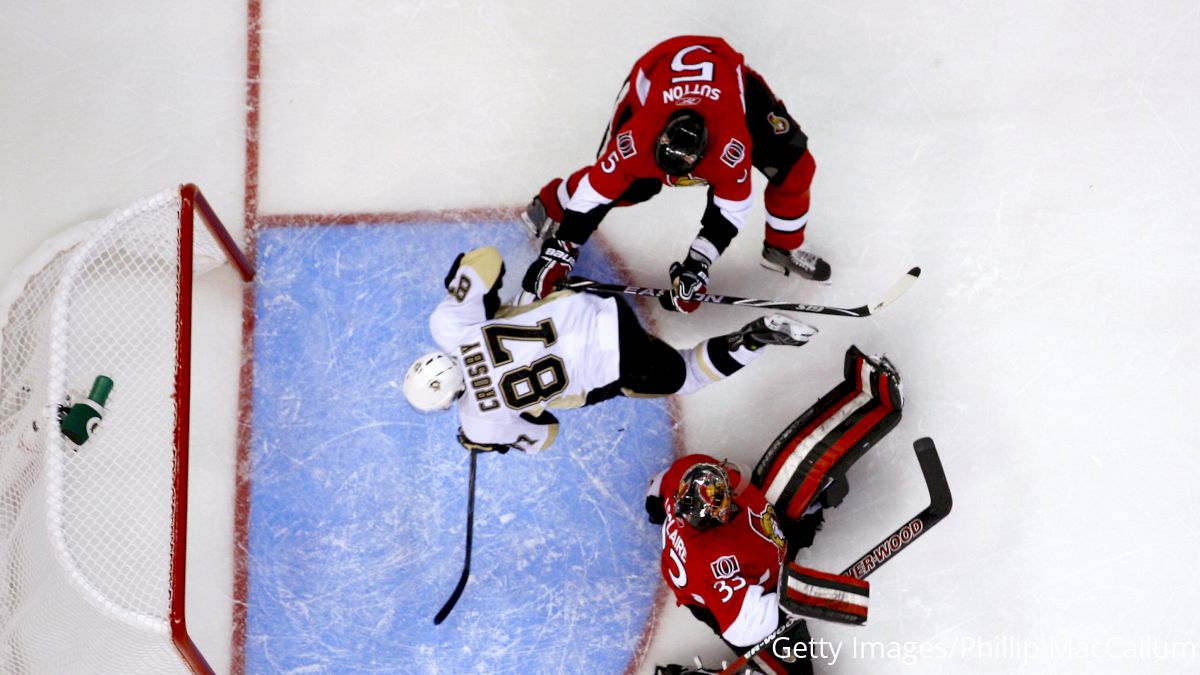What Is Cross-Checking In Hockey?
What Is Cross-Checking In Hockey?
According to the National Hockey League (NHL) rulebook, cross-checking is when a player holds his or her stick shaft with both hands to check an opponent.

As one of the fastest team sports in the world, ice hockey games likely are to have accidents on the ice. At the same time, much like any competitive sport, games can get heated and lead to questionable actions.
Among these instances is a penalty called cross-checking.
As a fast game that involves skating on ice and striking objects with sticks, some players risk hitting things besides the puck. Here's a closer look at this penalty.
What Is Cross-Checking in Hockey?
According to the National Hockey League (NHL) rulebook, cross-checking is when a player holds his or her stick shaft with both hands to check an opponent.
In hockey, checking is any defensive technique. Its goal is to separate the opponent from the puck. Most forms of checking do not constitute penalties. However, cross-checking is a penalty.
Cross-checking also is dangerous.
Official definitions mention reckless endangerment in the context of this penalty. Some players who cross-check can injure their opponent while committing this action. In addition, it is notable that players who cross-check tend to do so out of frustration and not necessarily because they are playing naturally.
Another element of cross-checking is the fact that no part of the hockey stick is touching the ice. Thus, it would appear like the cross-checker is using the hockey stick as a weapon.
When Does Cross-Checking Happen?
Cross-checking usually happens when a player hits an opponent out of frustration or revenge.
For example, a player may cross-check an opponent after a goal is scored. In other cases, players may be cross-checking another player to get back at them for causing their teammate's removal from play.
Normally, cross-checking is easy to call.
Though some players try to be sneaky by attempting to make clean hits, anyone paying attention can identify and determine that what the cross-checker did could have led to a serious injury. Meanwhile, some actions appear to be cross-checking without officials calling them penalties.
Actions Similar to Cross-Checking
Defenders in their zone may hold the stick with both hands to defend their position in front of the goal. This action fulfills one requirement for cross-checking. These same defenders could push and shove their opponents with the stick, meeting the other requirement for cross-checking.
In such cases, the referee will assess how forcefully the defender committed the action. They will call a penalty if they determine that the player was forceful enough to warrant cross-checking. However, referees normally allow this play, since it usually involves players fighting for a position in front of the goal.
Conclusion
Cross-checking in hockey is a dangerous defensive move where a player holds the stick with both hands and uses it to hit an opponent. This action can happen out of frustration at a previous game's outcome or revenge for a teammate.
Though it is not as common, some defenders in their zones may commit actions that appear similar to cross-checking. For instance, they could jostle with their opponent for the position in front of the net.